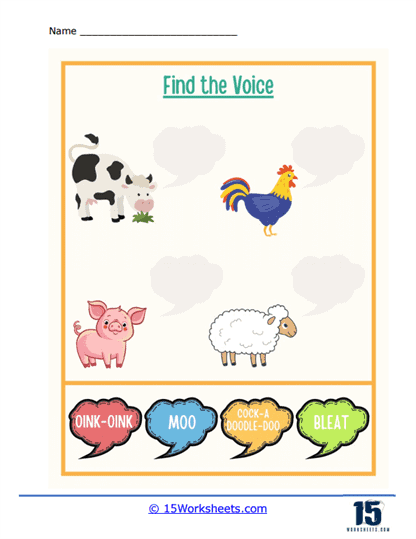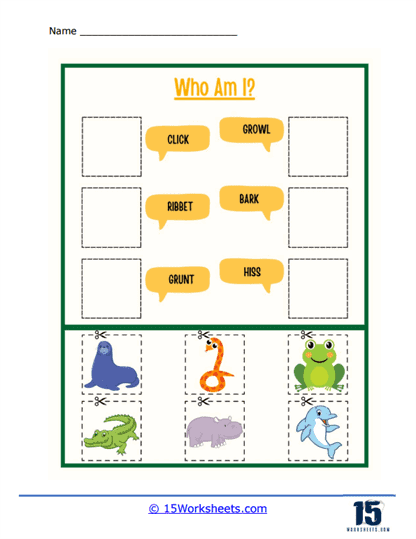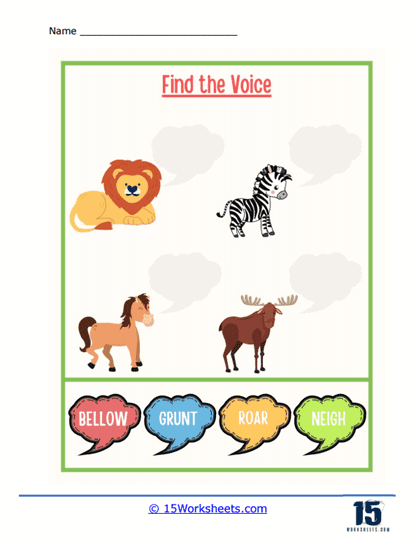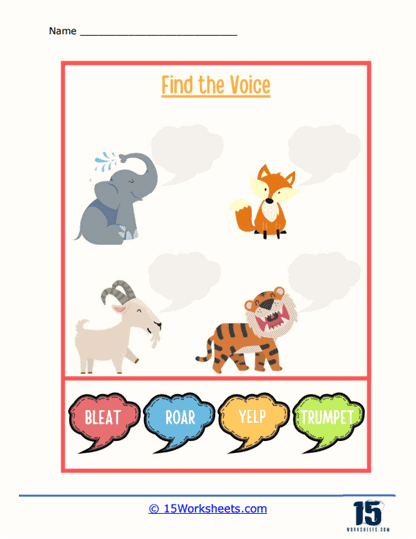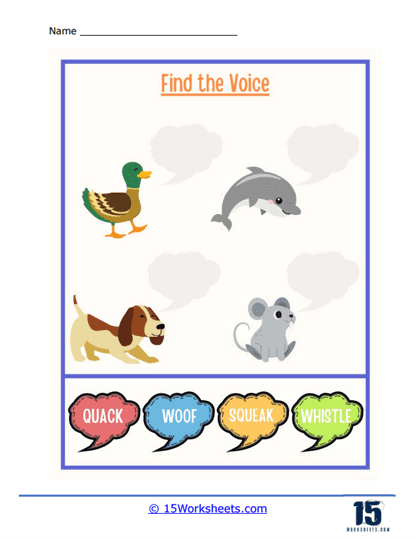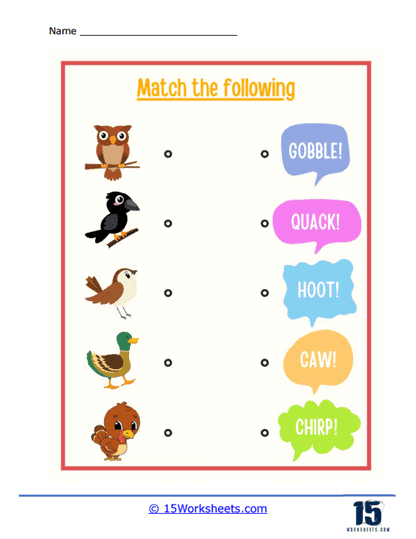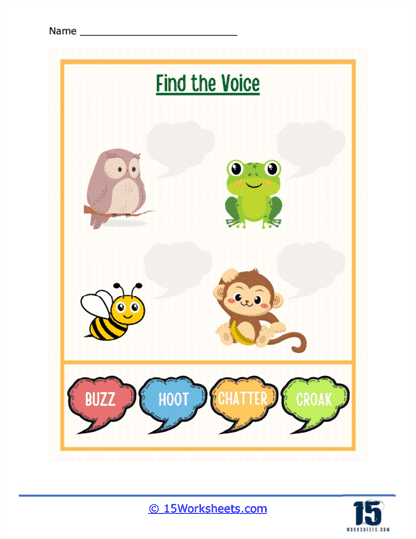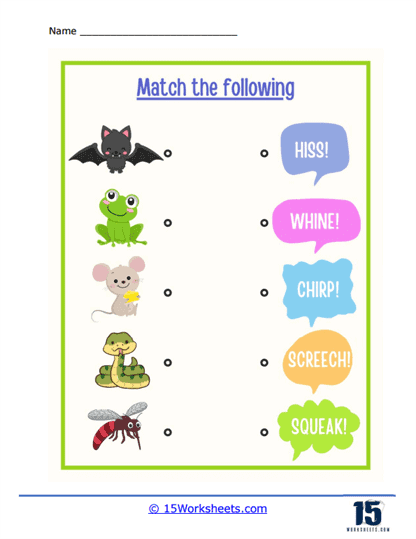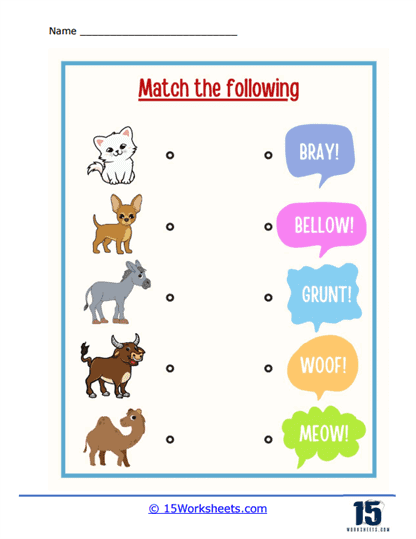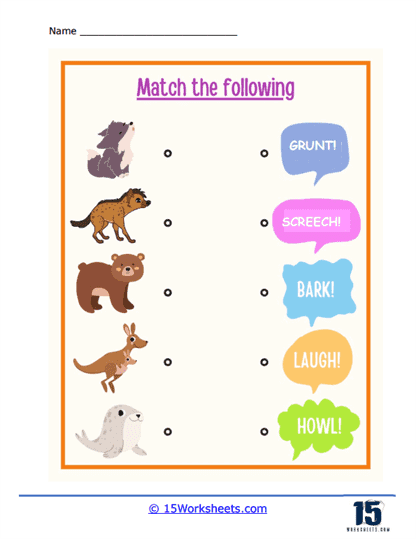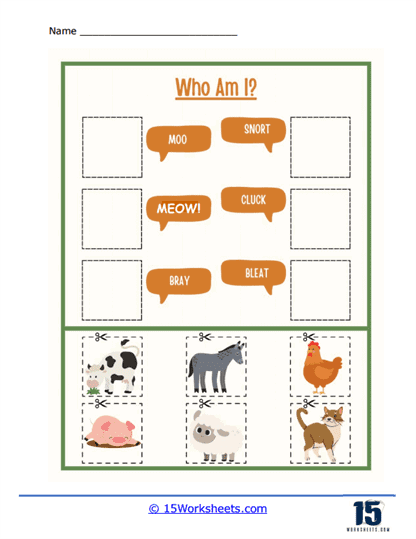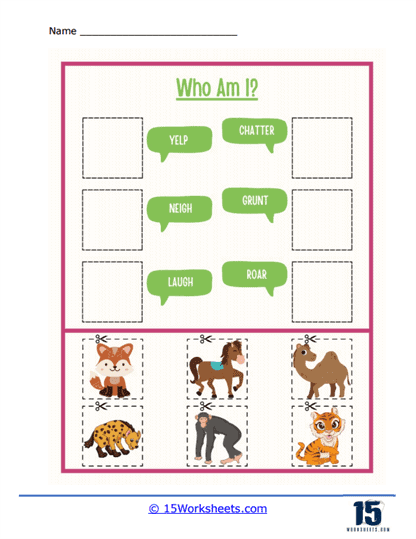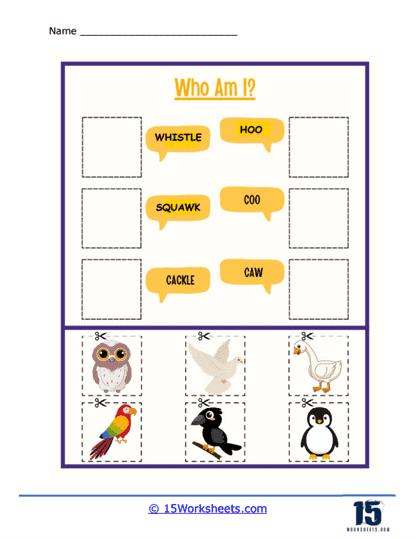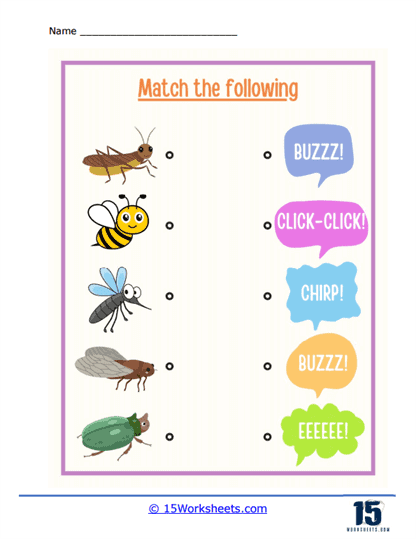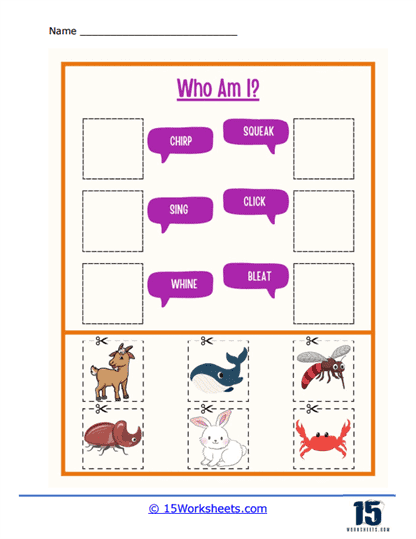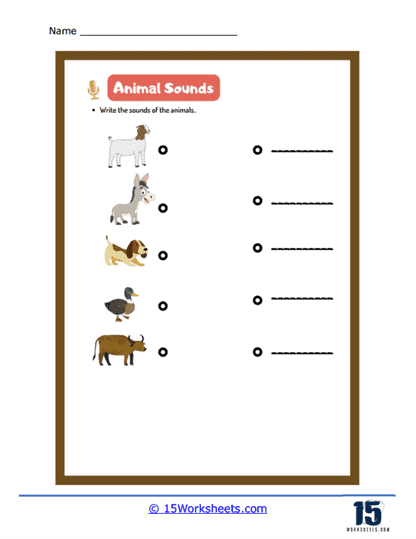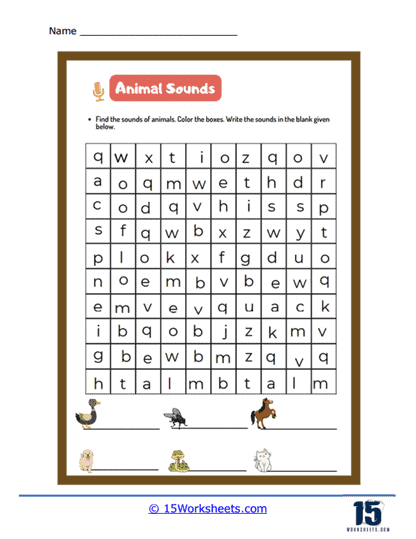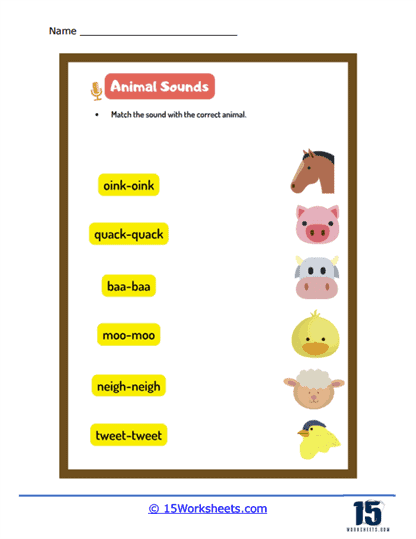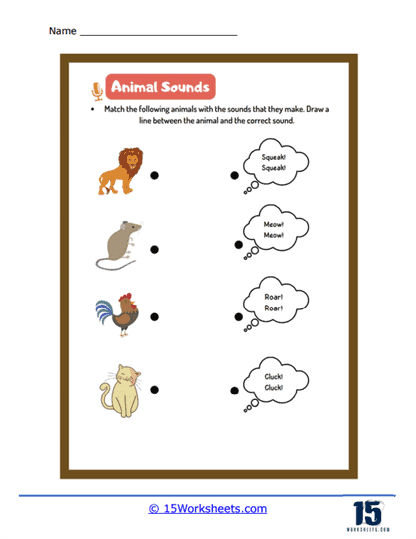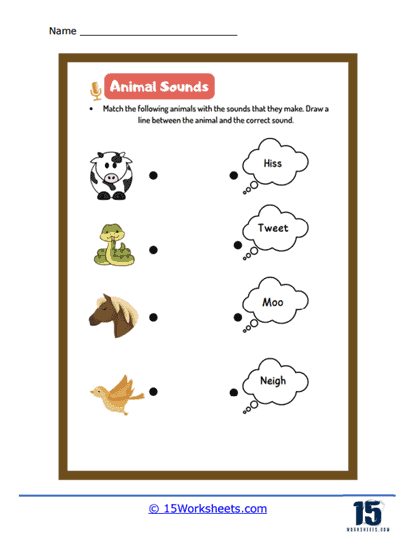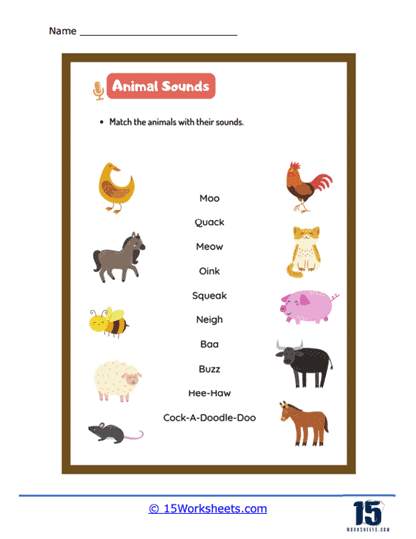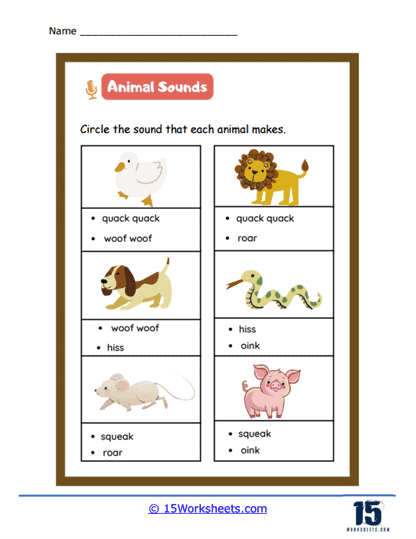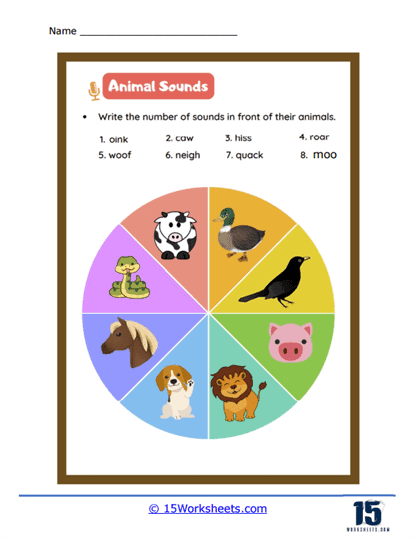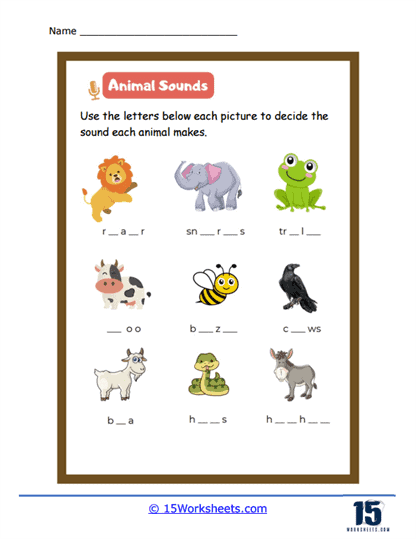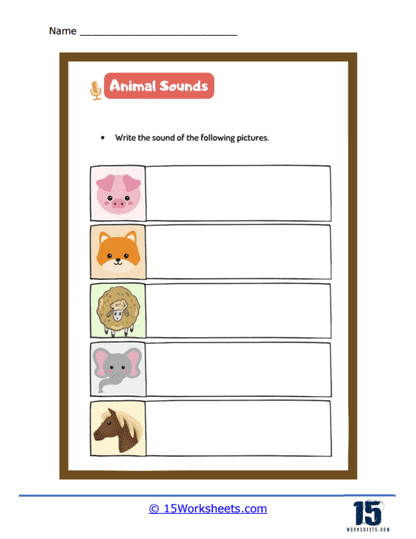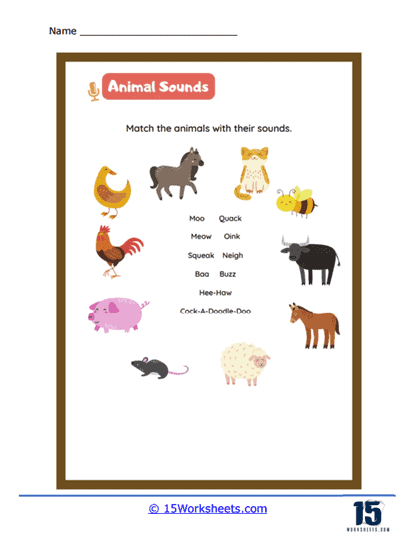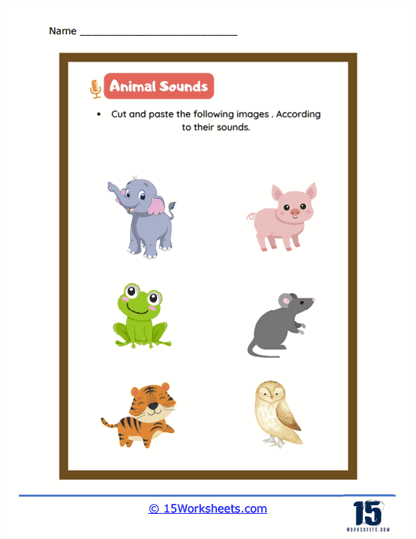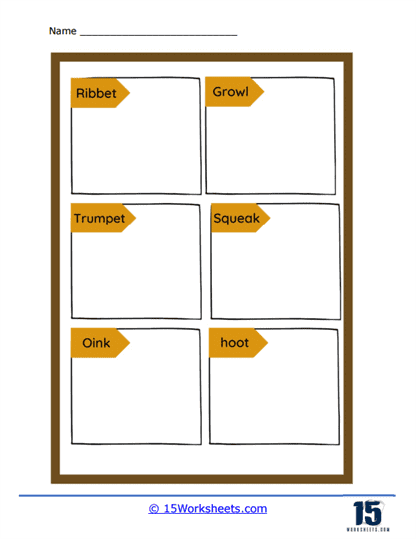Animal Sounds Worksheets
All About These 15 Worksheets
This worksheet collection is a delightful treasure trove for any early educator or homeschooler looking to add a spark of fun and learning to their curriculum. At first glance, you might think, “How many ways can kids learn that a cow says moo?”-but trust me, this collection turns that moo into a full symphony of literacy development, cognitive skills, and hands-on engagement. It’s not just about mimicking barnyard banter; it’s about connecting sounds to visuals, developing early reading skills, and giving children the kind of giggle-inducing, snort-worthy joy that only comes from pretending to be a goat in front of your classmates.
The worksheets are impressively varied. You’ll find classic matching exercises where kids link animals to their respective sounds-like pairing a duck with “quack” or a lion with “roar” (and hopefully not the other way around unless your zoo is really unregulated). Then come the cut-and-paste activities, which cleverly combine motor skill development with auditory recognition. There’s something magical about giving a child a pair of safety scissors and watching them proudly paste a “neigh” next to a galloping horse. It’s the kind of tactile experience that reinforces learning in a way a screen just can’t replicate. And yes, there’s phonics too-because what’s a good animal impression if you can’t spell it? From decoding simple words to recognizing beginning and ending sounds, the worksheets gradually evolve to challenge young minds without overwhelming them.
What makes this collection particularly useful for teachers and parents is its built-in adaptability. Whether you’re working with a group of preschoolers still mastering the art of not eating glue, or kindergarteners ready to sound out their first full sentence, there’s something here for every level. Some worksheets are simple and sensory-great for group circle time-while others demand a bit more independence and literacy skill, making them perfect for centers or quiet work time. And yes, if you’re a homeschooling parent, these are absolute gold. Want to stretch one worksheet into a mini science lesson? Just start with, “Did you know a fox doesn’t actually say ring-ding-ding-ding-dingeringeding?” and let the discovery begin.
But perhaps the best part? These worksheets don’t just teach kids about animal sounds. They give you-the teacher, parent, brave soul leading a room of energetic 5-year-olds-a moment of comic relief and creative teaching. Watching a child confidently assert that pigs say “snortle-whee!” or hearing a class erupt in laughter during a rousing round of “What Does the Animal Say?” is what makes early childhood education such a joy. These worksheets are not just tools-they’re invitations to play, laugh, and learn. And really, isn’t that the sweet spot where the best teaching happens?
Related Worksheet Collections
You may also be interested in other areas of website that include animal related themes. These areas include:
Animal Names | Farm Animals |Ocean Animals |Wild Animals
Learning Animal Sounds Help Kids with Phonics
Learning animal sounds might seem like a toddler party trick-right up there with glitter-based crafts and eating paste-but it’s actually one of the sneakier ways kids start building solid pre-reading skills. When a child proudly announces that a cow says moo or a duck goes quack, they’re not just trying to impress the family dog. They’re tuning their ears to recognize and produce specific sound patterns, which is exactly what phonemic awareness is all about. That’s the brainy term for the ability to hear, break apart, and blend sounds, which is kind of the whole point of reading. So yes, your kid roaring like a lion in the grocery store might be mildly embarrassing, but they’re basically rehearsing for a future in literacy greatness. Roar on, little scholar.
Beyond the giggles, animal sounds help kids sharpen their ability to hear tiny differences between similar noises. This is critical in phonics, where a single sound swap can take you from cat to cap-or worse, from nap to zap, which no toddler appreciates during quiet time. Practicing those silly sounds helps kids train their ears in a low-pressure, high-laugh environment. It’s the educational equivalent of hiding spinach in brownies. They’re learning important stuff like auditory discrimination and sound-symbol connections without even realizing it. And bonus: there’s zero whining involved, unless someone insists the goat says meh instead of baa, and then all bets are off.
But perhaps the real magic of animal sound learning is in the performance. When kids act out a pig’s oink or a dog’s woof, they’re not just being adorable theater kids in training. They’re building articulation, mastering rhythm and pacing, and using expressive language. These are foundational ingredients for both fluent reading and strong communication skills. Plus, it’s wildly more entertaining than flashcards. Ask yourself this: what’s going to stick in a kid’s memory more-blending the letters “sh” or leading a dramatic group debate over whether a chicken says bawk bawk or cluck cluck? Exactly. Phonics might be serious, but that doesn’t mean it can’t be downright hilarious.

